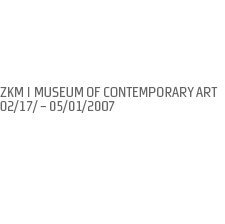
 Imagination Becomes Reality Conclusion Imagination Becomes Reality Conclusion

 Works in the Exhibition | Works in the Exhibition |  Text Text

Works in the Exhibition

Yanan, 2004, Ilfochrome-Print
Troll, No. 1, 2000, Ilfochrome-Print
The Drummer, 2004, Ilfochrome-Print
Girl with Marbles, 2005, Ilfochrome-Print
Hopper, 2005, Ilfochrome-Print
The Green Room, 2005, Ilfochrome-Print
Portrait of a Girl, No. 1 (Here and Now, No. 1), 2000, Ilfochrome-Print
Portrait of a Girl, No. 2 (Here and Now), 2000, Ilfochrome-Print
Troll No. 2, 2000, Ilfochrome-Print
At The Window, 2004, Ilfochrome-Print

Text

The work of Dresden-born Loretta Lux, like that of Sherman, is grounded in Old Master paintings she has seen in museums: She has named Agnolo Bronzino, Diego Velázquez, Francisco de Goya, Caspar David Friedrich, and Philipp Otto Runge as influences. Yet Lux obscures the origins of her imagery more strongly than Sherman, in photographs that strike the viewer initially as straightforward portraits of children. She, too, studied painting before beginning to assemble, or compose, photomontages at the computer. The children in her images seem oddly detached and alien, an impression underscored by the unpeopled, almost surreal-looking backgrounds. The clothes the children are wearing are chosen by the artist and can scarcely be said to belong to a specific style, appearing both curiously timeless and somehow old-fashioned. Lux starts by photographing the children of friends and acquaintances in calm, static poses, generally in front of a neutral background in her studio. At the computer she changes the backgrounds, often using motifs collected on her travels. She manipulates these landscapes or buildings so that they seem almost to be painted, an illusion increased by their two-dimensionality and by the glossy surface of the photographs.
Text excerpt »Images are generated by a gaze searching for new and personal insights.
They are images of those gazing at the world.« (Author: Stephan Urbaschek), Exhibition Catalogue Imagination Becomes Reality Conclusion

|





